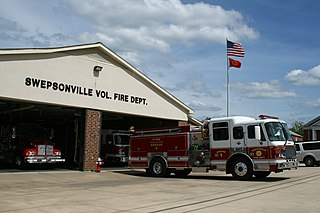
A volunteer fire department (VFD) is a fire department of volunteers who perform fire suppression and other related emergency services for a local jurisdiction. Volunteer and retained (on-call) firefighters are expected to be on call to respond to emergency calls for long periods of time, and are summoned to the fire station when their services are needed. They are also expected to attend other non-emergency duties as well.

The Texas A&M University System is a state university system in Texas and is one of the state's seven independent university systems.
The College of Engineering, formerly the Dwight Look College of Engineering, is the engineering school of Texas A&M University in College Station and is home to over 22,000 students in 15 departments.

Texas A&M AgriLife Extension Service was formally established in 1915 after the 1914 passing of the Smith-Lever Act and in conjunction with Texas A&M University. Originally named Texas Agricultural Extension Service, then later Texas Cooperative Extension, the name Texas AgriLife Extension Service was adopted on January 1, 2008. A&M was added to the agency name on September 1, 2012 as a result of a Texas A&M University System change to strengthen the association with Texas A&M. The primary mission of AgriLife Extension is to provide educational outreach programs and services to the citizens of Texas. In conjunction with Texas A&M AgriLife Research, the Extension faculty members conduct research and bring practical applications of those research findings to the people of Texas.

The Country Fire Authority (CFA) is a volunteer fire service responsible for fire suppression, rescues, and response to other accidents and hazards across most of the state Victoria, Australia. CFA comprises over 1,200 brigades organised in 21 districts, and shares responsibility for fire services with Fire Rescue Victoria (FRV), which employs full-time paid firefighters in major urban areas; and Forest Fire Management Victoria (FFMV), which manages fire prevention and suppression on Victoria's public lands. CFA operations and equipment are partly funded by the Victorian Government through its Fire Services Levy, and supplemented by individual brigades' fundraising for vehicles and equipment.

The Danish Emergency Management Agency (DEMA) is a Danish governmental agency under the Ministry of Defence. Its principal task is to manage an operational part who work out of six Emergency Management Centres, and administrative and legalizing part, who supervises the national and municipal rescue preparedness and advises the authorities on matters of preparedness. DEMA works in closely structured co-operation with the EU, UN and several neighbouring countries.
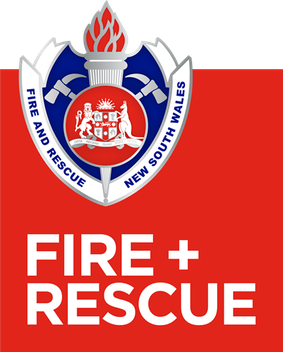
Fire and Rescue NSW (FRNSW) previously known as NSW Fire Brigades (NSWFB), is an agency of the Government of New South Wales, Australia, is responsible for firefighting, rescue and HazMat services in the major cities, metropolitan areas and towns across New South Wales. Fire and Rescue NSW is the fourth largest urban fire service in the world, with over 6,800 firefighters serving at 335 fire stations throughout the state, supported by 465 administrative and trades staff and 5,700 community fire unit volunteers. FRNSW are the busiest fire service in Australia, attending over 124,000 incidents a year.
As firefighting has a rich history throughout the world, traditions in this profession vary widely from country to country.

The Clark County Fire Department (CCFD) provides fire protection and emergency medical services for the unincorporated areas of Clark County, Nevada, United States. The cities of Las Vegas, Boulder City, North Las Vegas, Henderson and Mesquite each have their own fire department, but emergency management is provided by the county government.

Texas A&M Task Force 1, abbreviated TX-TF1, is a FEMA Urban Search and Rescue Task Force, one of 28 teams that form the FEMA National Urban Search and Rescue System, and as such it is in rotation for deploying to national disasters and incidents of national significance. It is sponsored by the Texas A&M Engineering Extension Service and headquartered in College Station, Texas.
Elgin Community College (ECC) is a public community college in Elgin, Illinois. It was founded in 1949 as part of Elgin Area School District U46. Community College District 509 was formed 17 years later in 1966, a year after Illinois legislators created the Illinois Community College System. Most of the District is in Kane County with portions in DeKalb, Cook, McHenry, and DuPage. The 360-square-mile (930 km2) District serves 300,000 people, 11,000 businesses, four public school districts, and 15 high schools.
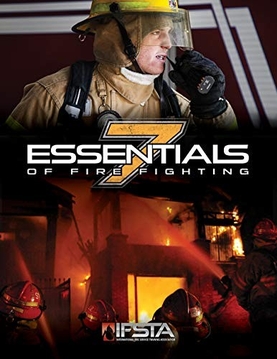
Essentials of Fire Fighting is a fire service training manual produced by Fire Protection Publications (FPP) and the International Fire Service Training Association (IFSTA). Fire Protection Publications is a department of Oklahoma State University College of Engineering, Architecture, and Technology (CEAT) in Stillwater, Oklahoma. This manual is used by fire service training agencies and departments around the world to train personnel to become firefighters. The Essentials of Fire Fighting is the required training manual used in countless local fire departments and state/provincial training agencies in every region of the United States and Canada. Since the release of the first edition of this manual in 1978, more than 2.5 million copies of the Essentials of Fire Fighting have been distributed to the fire service.

The campus of Texas A&M University, also known as Aggieland, is situated in College Station, Texas, United States. Texas A&M is centrally located within 200 miles (320 km) of three of the 10 largest cities in the United States and 75% of the Texas and Louisiana populations. Aggieland's major roadway is State Highway 6, and several smaller state highways and Farm to Market Roads connect the area to larger highways such as Interstate 45.
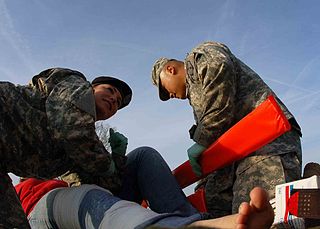
Emergency medical responders are people who are specially trained to provide out-of-hospital care in medical emergencies. There are many different types of emergency medical responders, each with different levels of training, ranging from first aid and basic life support. Emergency medical have clinical experience or clinical skills of emergency medical services (EMS) personnel. The EMR program is not intended to replace the roles of emergency medical technicians or paramedics and their wide range of specialties. Emergency medical responders typically assist providing basic life support. "Emergency medical responder" is a broad term, used either to describe a certain EMS certification level, or generally to describe those who respond to medical emergencies. Specifically used, an Emergency Medical Responder is an EMS certification level used to describe a level of EMS provider below that of an emergency medical technician and paramedic. Broadly used, a first responder is the first medically trained personnel who comes in contact with a patient. This could be a passerby, citizen volunteer, or fire department, police, or emergency medical services personnel.

The Center for Domestic Preparedness (CDP) is the only U.S. federal facility chartered to provide comprehensive preparedness training programs to the nation's emergency response providers. The facility, located in Calhoun County, Alabama, provides all-hazards training to approximately 50,000 emergency responders annually, or a total of 1.1 million responders since its inception in 1998. Trainees hail from state, local, tribal, territorial, and federal governments, as well as private entities. Training for state, local, tribal, and territorial governments are entirely funded by the United States Department of Homeland Security (DHS), whereas responders for foreign federal governments and private entities may be trained on a fee-for-service basis.
The California Governor's Office of Emergency Services is a California cabinet-level office responsible for overseeing and coordinating emergency preparedness, response, recovery and homeland security activities within the state. The agency was created by AB 38 (2008), superseding both the Office of Emergency Services (OES) and Office of Homeland Security (OHS).
The National Fire Academy (NFA) is one of two schools in the United States operated by the Federal Emergency Management Agency (FEMA) at the National Emergency Training Center (NETC) in Emmitsburg, Maryland. Operated and governed by the United States Fire Administration (USFA) as part of the U.S. Department of Homeland Security (DHS), the NFA is the country’s preeminent federal fire training and education institution. The original purpose of the NFA as detailed in a 1973 report to Congress was to "function as the core of the Nation's efforts in fire service education—feeding out model programs, curricula, and information..."
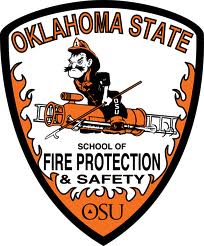
The School of Fire Protection and Safety at Oklahoma State University in Stillwater, Oklahoma has been home to one of the few fire protection programs in North America since its creation in 1937.

On April 17, 2013, an ammonium nitrate explosion occurred at the West Fertilizer Company storage and distribution facility in West, Texas, United States, while emergency services personnel were responding to a fire at the facility. Fifteen people were killed, more than 160 were injured, and more than 150 buildings were damaged or destroyed. Investigators confirmed that ammonium nitrate was the material that exploded. On May 11, 2016, the Bureau of Alcohol, Tobacco, Firearms and Explosives stated that the fire had been deliberately set. That finding has been disputed.
The National Domestic Preparedness Consortium (NDPC) is a training partner and established training arm of the U.S. Department of Homeland Security DHS/FEMA. It is a professional alliance of seven national institutions and organizations that work to develop and deliver training, technical assistance, plan assessments, and exercises to emergency responders and first receivers at the territories, state, local and tribal levels. The members were chosen for their unique knowledge bases in the areas of chemical, biological, radiological, nuclear, explosive, medical, critical infrastructure, and incident management, and have enhanced their core competencies at the request of DHS and FEMA to include other areas as well. The following is a list of the NDPC members and their core competencies:














